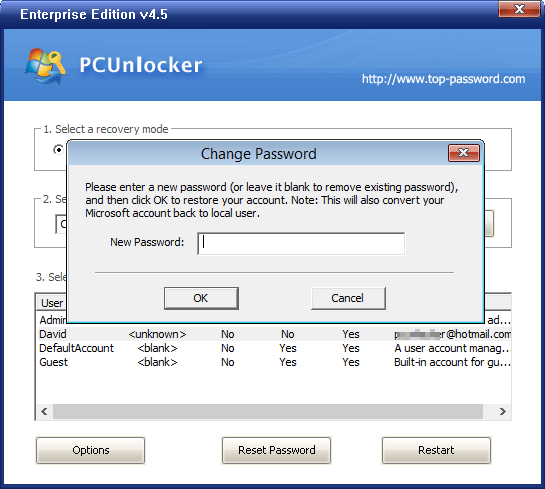
- #BYPASS APPLOCKER WINDOWS 7 HOW TO#
- #BYPASS APPLOCKER WINDOWS 7 .EXE#
- #BYPASS APPLOCKER WINDOWS 7 INSTALL#
- #BYPASS APPLOCKER WINDOWS 7 CODE#
- #BYPASS APPLOCKER WINDOWS 7 WINDOWS#
To execute PowerShell for instance, we simply run it from that folder.
#BYPASS APPLOCKER WINDOWS 7 WINDOWS#
In this case for instance, the admin denied classic Windows 64-bit tools but totally forgot about 32-bit files in the “ C:\Windows\SysWOW64\” folder. But, remember the main issue with blacklists: we always miss something!

#BYPASS APPLOCKER WINDOWS 7 CODE#
vbs scripts) to execute code because they are only allowed to run from restricted folders (previous rules). He tightens the grip a bit further by restricting access to basic Microsoft tools like cmd.exe and PowerShell.exe. Our savvy admin knows its configuration has a few holes. We can thus effectively bypass any Applocker rule based on Execution paths. \Invoke-ReflectivePEInjection.ps1 |out-string) PS > Invoke-ReflectivePEInjection -PEBytes $ByteArray Then use the Invoke-ReflectivePEInjection function from the PowerSploit framework to load it in memory and jump to its entry point. We first store the executable, mimikatz.exe in this case, in a PowerShell variable: PS > $ByteArray = ::ReadAllBytes("C:\users\richard\desktop\mimikatz.exe") No execution path, no Applocker rule triggered!
#BYPASS APPLOCKER WINDOWS 7 .EXE#
exe file in memory, then launch it by jumping to its entry point. If we can’t find a writable directory allowed in Applocker, we need to resort to other means to run executables. Yet, there are some cases when we need to run a simple exe file because it is that simple: a recompiled malware, custom tool, etc. That’s very true and by using Invoke-Expression we bypass any execution path restriction. exe files are over-rated and that we can perform all attacks with native Windows’ most powerful tool PowerShell. On a default Windows installation, “ C:\Windows\Tasks” and “ C:\Windows\tracing” usually pop up as being writable by everyone! Copying our executable (mimikatz.exe, meterpreter.exe, etc.) there for instance bypasses default Applocker lockdown: First, we load the script’s content using the Get-Content command, convert it to a string then forward it to the Invoke-Expression command which executes it, no questions asked! The execution path restriction also applies to scripts in this case, so we need to be crafty about this. Doing it manually can take a bit of time, so how about an automated PowerShell script? The idea is to copy the executable into an allowed folder, then launch it from there. One way to go is to search for default allowed folders with write access.
#BYPASS APPLOCKER WINDOWS 7 HOW TO#
How to run say a meterpreter.exe on the machine with a standard account i.e. Say an admin sets up the default Applocker rules only: no standard user is allowed to run files (executable, installer or script) outside of the classic “ C:\Windows” and “ C:\Program files” folders.

To make this tutorial most interesting, we will start with a basic configuration and harden it as we improve our hacking skills. Configuring Applocker is not for the faint of heart. This might seem like a lot of knobs to tweak. These rules can consume a good deal of memory, so they are mostly used to forbid some “dangerous” executables. Every time a program runs, Applocker checks its MD5 and decides accordingly.

#BYPASS APPLOCKER WINDOWS 7 INSTALL#
mst), typically used to install a new software on the machine. com applications (cmd.exe, ipconfig.exe, etc.) As you can see, Applocker covers five types of applications: Browse to “Application Control Policies” in “Security Settings”:Ĭlick on “Configure Rule Enforcement” to choose which kind of filtering to perform. To activate Applocker on your testing machine, start the Application Identity service (Administrative Tool -> Services), then open the Group Policy Editor ( gpedit.msc on a local machine or gpmc.msc on a domain controller). If you are conducting penetration tests, you will likely find Applocker on very sensitive machines: industrial computers, ATM, business workstations, etc. e.g.: “Alice can run explorer.exe, Bob, however, cannot!” Applocker is a software whitelisting tool introduced by Microsoft starting from Windows Vista/Seven/2008 in order to restrict standard users to only execute specific applications on the system.


 0 kommentar(er)
0 kommentar(er)
